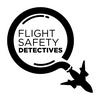310 episódios

Crisis Communication for Airlines - Episode 310
07/1/2026 | 39min
A veteran crisis-communications expert and author of “Transport Management: Successes and Failures” (2026) joins the show. Linda Tavlin draws on more than 35 years of experience to discuss how transportation organizations—especially airlines—should communicate during major accidents and crises. Linda and John Goglia reflect on their long professional history, including work on major aviation disasters. They illustrate how poor communication during crises often worsens outcomes, while good communication can significantly reduce long-term damage.Linda shares a story about two airlines she helped train. After both had major accidents, one airline followed her approach to communicating about the accident and the other did not. The outcomes were very different.Linda’s approach to crisis communication includes advice on who should communicate to the different groups who deal with an accident investigation. John also discusses the communication strategy in the investigation of the 1996 fatal ValuJet crash.John, Linda and Todd Curtis also discuss the investigation of the 2013 Asiana crash in San Francisco, where a television station broadcast information about the pilots in the airliner that was both false and offensive. Don’t miss what’s to come from the Flight Safety Detectives - subscribe to the Flight Safety Detectives YouTube channel, listen at your favorite podcast service and visit the Flight Safety Detectives website. Want to go deeper with the Flight Safety Detectives? Join our YouTube Membership program for exclusive perks like members-only live streams and Q&As and early access to episodes. Your membership support directly helps John, Greg and Todd to deliver expert insights into aviation safety.Interested in partnering with us? Sponsorship opportunities are available—brand mentions, episode integrations, and dedicated segments are just a few of the options. Flight Safety Detectives offers a direct connection with an engaged audience passionate about aviation and safety. Reach out to [email protected]. Music: “Inspirational Sports” license ASLC-22B89B29-052322DDB8 Hosted by Simplecast, an AdsWizz company. See pcm.adswizz.com for information about our collection and use of personal data for advertising.

Real Time Reporting on an Emergency Airworthiness Directive - Episode 309
31/12/2025 | 29min
The European Aviation Safety Agency issued an emergency airworthiness directive (AD) on November 28, 2025, that ordered nearly 6,000 A319, A320, and A321 aircraft be grounded to check for a flight control computer issue. Todd and John recorded this show while gathering details about the grounding in real time.The show was recorded as John gets phone calls and emails from colleagues during the show and Todd prepares for a television news interview. This episode shows how they gather facts and data on unfolding aviation safety events like ADs.The affected aircraft had to be on the ground for repair, just over a day after the AD was issued. John describes how challenging this would be for airlines that fly large numbers of the affected aircraft. He shares the logistical issues the airlines face as they check these aircraft, especially if they are located far away from a repair station. They also predict the impact on the flying public. Don’t miss what’s to come from the Flight Safety Detectives - subscribe to the Flight Safety Detectives YouTube channel, listen at your favorite podcast service and visit the Flight Safety Detectives website. Want to go deeper with the Flight Safety Detectives? Join our YouTube Membership program for exclusive perks like members-only live streams and Q&As and early access to episodes. Your membership support directly helps John, Greg and Todd to deliver expert insights into aviation safety.Interested in partnering with us? Sponsorship opportunities are available—brand mentions, episode integrations, and dedicated segments are just a few of the options. Flight Safety Detectives offers a direct connection with an engaged audience passionate about aviation and safety. Reach out to [email protected]. Music: “Inspirational Sports” license ASLC-22B89B29-052322DDB8 Hosted by Simplecast, an AdsWizz company. See pcm.adswizz.com for information about our collection and use of personal data for advertising.

Biffle Citation Crash Facts and Problematic Conflict- Episode 308
21/12/2025 | 35min
Recorded the day of the crash of a Cessna Citation earlier in the day that killed former NASCAR champion Greg Biffle, his family, and three others when the aircraft struck the ground just short of the runway and caught fire at the Statesville, North Carolina airport. The aircraft had taken off from the airport just a few minutes earlier and was attempting to land at the same airport.The aircraft, a 1981 Cessna Citation, was owned by a company associated with Biffle. Biffle was a rated multiengine pilot, but it is not known whether he was also a member of the flight crew. At the time of this recording, there was little information about the factual circumstances of the event. The ADS-B flight track of the aircraft implied that the short flight may have been in a cloud layer, but there was no indication that wind or visibility played a role in the crash.John Goglia discusses how aircraft even older than this accident aircraft can be properly maintained, and he also discussed how he would approach this kind of accident if he were leading the maintenance investigation. Greg Feith and John have issues with the NTSB Board Member Michael Graham leading the team because he was a former employee of the company that also owns Cessna. John discussed how, during his time on the Board, he was not allowed to participate in any hearings involving one of his former airline employers. He faced media scrutiny when he was involved in the investigation of an airline that operated flights on behalf of a former employer. Even the appearance of a conflict of interest should be avoided. Don’t miss what’s to come from the Flight Safety Detectives - subscribe to the Flight Safety Detectives YouTube channel, listen at your favorite podcast service and visit the Flight Safety Detectives website. Want to go deeper with the Flight Safety Detectives? Join our YouTube Membership program for exclusive perks like members-only live streams and Q&As and early access to episodes. Your membership support directly helps John, Greg and Todd to deliver expert insights into aviation safety.Interested in partnering with us? Sponsorship opportunities are available—brand mentions, episode integrations, and dedicated segments are just a few of the options. Flight Safety Detectives offers a direct connection with an engaged audience passionate about aviation and safety. Reach out to [email protected]. Music: “Inspirational Sports” license ASLC-22B89B29-052322DDB8 Hosted by Simplecast, an AdsWizz company. See pcm.adswizz.com for information about our collection and use of personal data for advertising.

Xyla Foxlin on Pilot Mental Health - Episode 307
17/12/2025 | 48min
Guest Xyla Foxlin focuses on how the FAA and the aviation community can better support mental health issues faced by pilots and other aviation professionals. Foxlin is an engineer and pilot who produced an award-winning video about pilot mental health.Her aviation journey highlights include a Young Eagles flight that cemented her fascination with aviation, owning and maintaining a Cessna 140 that she has flown from coast to coast, a 2025 visit to Oshkosh and regaining her FAA medical certificate.Foxlin discusses efforts with the Pilot Mental Health Campaign (PMHC) to push the Pilot Mental Health in Aviation Act of 2025 through the House of Representatives. She and the PMHC continue to educate the general public on the need to reform how pilot mental health issues are handled. In her personal story, Foxlin had to regain her medical certification and ability to fly after disclosing past mental health-related medical treatments. In the current FAA medical certification system, a significant percentage of pilots hide mental health conditions or avoid treatment entirely because of concern that their medical certification and their livelihood can be taken away.Greg Feith, John Goglia, and Todd Curtis share the breadth of aviation-related mental health concerns, including investigators who may be affected by their work, mechanics who committed suicide or were at risk for committing suicide after an aircraft accident, and the trauma that an entire community may face after a major plane crash. Don’t miss what’s to come from the Flight Safety Detectives - subscribe to the Flight Safety Detectives YouTube channel, listen at your favorite podcast service and visit the Flight Safety Detectives website. Want to go deeper with the Flight Safety Detectives? Join our YouTube Membership program for exclusive perks like members-only live streams and Q&As and early access to episodes. Your membership support directly helps John, Greg and Todd to deliver expert insights into aviation safety.Interested in partnering with us? Sponsorship opportunities are available—brand mentions, episode integrations, and dedicated segments are just a few of the options. Flight Safety Detectives offers a direct connection with an engaged audience passionate about aviation and safety. Reach out to [email protected]. Music: “Inspirational Sports” license ASLC-22B89B29-052322DDB8 Hosted by Simplecast, an AdsWizz company. See pcm.adswizz.com for information about our collection and use of personal data for advertising.

UPS Crash Updates, Basic Med Clarified, Mental Health in Aviation - Episode 306
10/12/2025 | 45min
This recording of a live stream on November 26 gives additional insights and updates into recent issues in aviation safety. Todd Curtis, Greg Feith and John Goglia tackle viewer questions to correct mistakes and dig deeper into current accidents and incidents.Hear more about:Politics and aviation safetyBasic Med rulesThe Mental Health in Aviation Act of 2025How a ramp worker was able to steal an airplane in broad daylight Don’t miss what’s to come from the Flight Safety Detectives - subscribe to the Flight Safety Detectives YouTube channel, listen at your favorite podcast service and visit the Flight Safety Detectives website. Want to go deeper with the Flight Safety Detectives? Join our YouTube Membership program for exclusive perks like members-only live streams and Q&As and early access to episodes. Your membership support directly helps John, Greg and Todd to deliver expert insights into aviation safety.Interested in partnering with us? Sponsorship opportunities are available—brand mentions, episode integrations, and dedicated segments are just a few of the options. Flight Safety Detectives offers a direct connection with an engaged audience passionate about aviation and safety. Reach out to [email protected]. Music: “Inspirational Sports” license ASLC-22B89B29-052322DDB8 Hosted by Simplecast, an AdsWizz company. See pcm.adswizz.com for information about our collection and use of personal data for advertising.
Mais podcasts de Lazer
Podcasts em tendência em Lazer
Sobre Flight Safety Detectives
Ouça Flight Safety Detectives, Jogabilidade e muitos outros podcasts de todo o mundo com o aplicativo o radio.net

Obtenha o aplicativo gratuito radio.net
- Guardar rádios e podcasts favoritos
- Transmissão via Wi-Fi ou Bluetooth
- Carplay & Android Audo compatìvel
- E ainda mais funções
Obtenha o aplicativo gratuito radio.net
- Guardar rádios e podcasts favoritos
- Transmissão via Wi-Fi ou Bluetooth
- Carplay & Android Audo compatìvel
- E ainda mais funções


Flight Safety Detectives
baixe o aplicativo,
ouça.




































